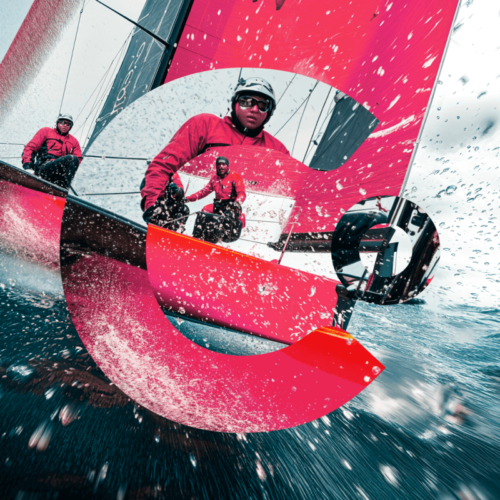Clearly defined and measurable website goals are integral to the success of any company. It is through these established goals that leadership teams are able to accurately monitor online performance, make informed decisions for the future, and remain agile in their marketing strategies.
Too often, businesses push forward without having identified their specific website goals and objectives — only to run into trouble down the line when their site isn’t producing the results they expected.
If you want to avoid this all-too-common fate, there’s only one option available to you: Take the time to clarify your website objectives prior to launching and incorporate them at every phase of your project. (And no, a website purpose statement isn’t sufficient… although it is a great start!)
Not sure where to start? Not to worry — this article will break down everything you need to know.
How to Set S.M.A.R.T. Website Goals
The SMART method is a technique for creating realistic, actionable intentions for a project or personal aspiration. The technique is based on the concept that every goal should be:
- Specific: The goal should be precisely defined and any requirements for execution should be detailed prior to work commencing.
- Measurable: There should be definitive benchmarks in place to measure performance.
- Achievable: The goal should be realistic and within reach based on the resources available.
- Relevant: All goals should be in alignment with the company’s greater operational goals.
- Time-bound: There must be deadlines attached to each task required to meet the desired objective.
By meeting the above criteria, companies can achieve outcomes more efficiently and streamline processes related to any project. In a nutshell? The SMART method can (and should) be utilized for any goal, and that includes establishing the goals of a website.
10 Examples of Goals for Websites
There is a broad spectrum of key performance indicators (KPIs) that can be used to determine how well a website is meeting the needs of a business. When these KPIs are incorporated into website goals, they make it easier to identify trends in action and to gather accurate data regarding a company’s online marketing strategy. Let’s take a closer look at what these KPI informed goals might look like. Some typical website objectives include:
- Increase Website Conversion Rate to 5% Within Six Months
Your website conversion rate (the number of visitors who complete a desired action) is a tangible and calculable figure, making it an ideal website objective. The addition of a timeline and a specific metric to strive for aligns this goal with the SMART method and greatly improves the likelihood of achievement.

- Maintain an Average of Three Pages Per Visitor Session
Not all SMART goals need to have a hard deadline. This goal is an ongoing objective but it is relevant to business performance and can still be measured, making it a worthwhile endeavor.The higher your average pages per session rate is, the lower your bounce rates will be and the more likely your visitors will be to convert
(make a purchase or complete an action). - Achieve a 4% Conversion Rate for 3 Consecutive Months
Conversion rates are undoubtedly one of the most critical website marketing objectives. After all, the entire point of promoting your business is to convince consumers or other vendors to engage with you.When setting a SMART website goal for conversion rates, it’s always best to focus on making the goal achievable. It’s incredibly difficult to force conversion rates to skyrocket. It takes an incredibly well-executed marketing strategy and a lot of fine-tuning to figure out what will make your ideal clients commit. - Maintain a Minimum of 2,000 Unique Weekly Visitors
A plateau or decline in website traffic could be a symptom of a greater issue, such as a search engine algorithm change, a coding issue, or long page loading times. Setting a SMART goal for weekly visitors is always advisable as it ensures you continuously monitor traffic rates and spot any potential problems before doing too much damage. - Increase Brand Lift by 30% Within First 6 Months of Launching
Brand lift (the positive impact your website has had on your brand) is an essential part of any successful business’s website launch and should always be included in your list of website design goals and objectives. By adding a specific timeline and selecting a reasonable increase percentage, you can align your goal with the SMART method and set yourself up for success. - Receive a Minimum of 20 New Online Sales Leads Per Month
Every business owner knows that sales take longer to close when you are selling to other companies. This is why it’s important to keep your pipeline flowing with new qualified leads — and your website is one of the best tools you have in this regard. In a nutshell? Always include lead generation when setting your SMART website goals. - Increase Email Subscriber List By 20% Year Over Year
Speaking of leads, did you know that email subscribers are 3x more likely to buy from you than non-subscribers? Implementing website design goals and objectives that benefit your email subscriber list is not only an excellent way to build a following, but will also boost your bottom line. - Double Brand Awareness In Target Demographic Within First Year
Let’s say you primarily sell to auto body and mechanic shops in California. Increasing your brand awareness within this specific demographic is the best play to edge out your competition and solidify your brand as the go-to resource. Your website is a key branding asset and can be used in a variety of different ways to help strengthen your online presence. - Rank at Least 5 Blogs Per Month on the First Page of Google
Search engine optimization (SEO) is another key component of any successful web project, which is why we had to include it on our list of website strategy examples. Setting a SMART goal for SEO performance will keep your business at the top of search results, ultimately driving more traffic and generating more leads. - Increase Lifetime Value Per Customer by 15% in 12 Months
The lifetime value of a customer or client is absolutely monumental in terms of success metrics. This metric allows you to forecast how much a single customer will spend over the course of their relationship with your business. For enterprises, specifically, this adds up to a significant amount of cash. Thus, having a SMART strategy in place to drive higher lifetime values is always a wise decision.
Are you looking to align your website development project with tangible and attainable website goals that will benefit your business? Clear Digital’s digital consulting uses proven processes and a multi-disciplinary approach to ensure websites function exceptionally and meet the requirements of each client we serve.
Contact us to get started!






